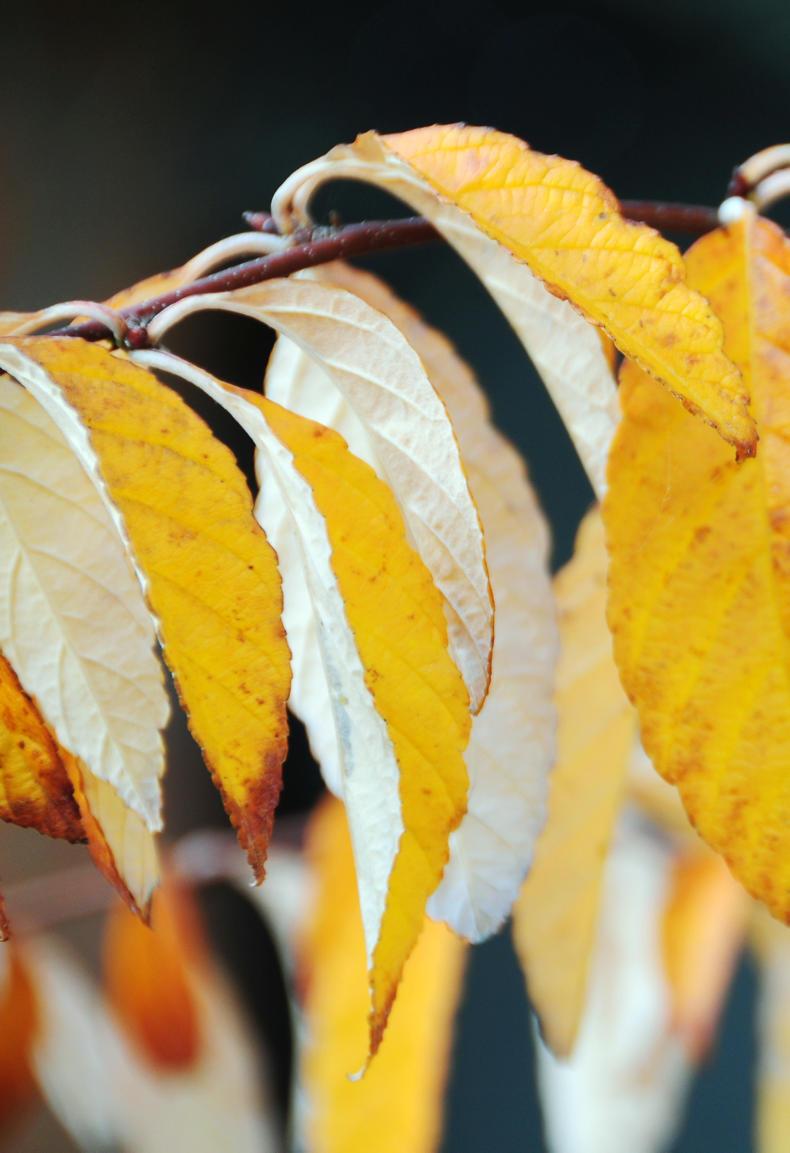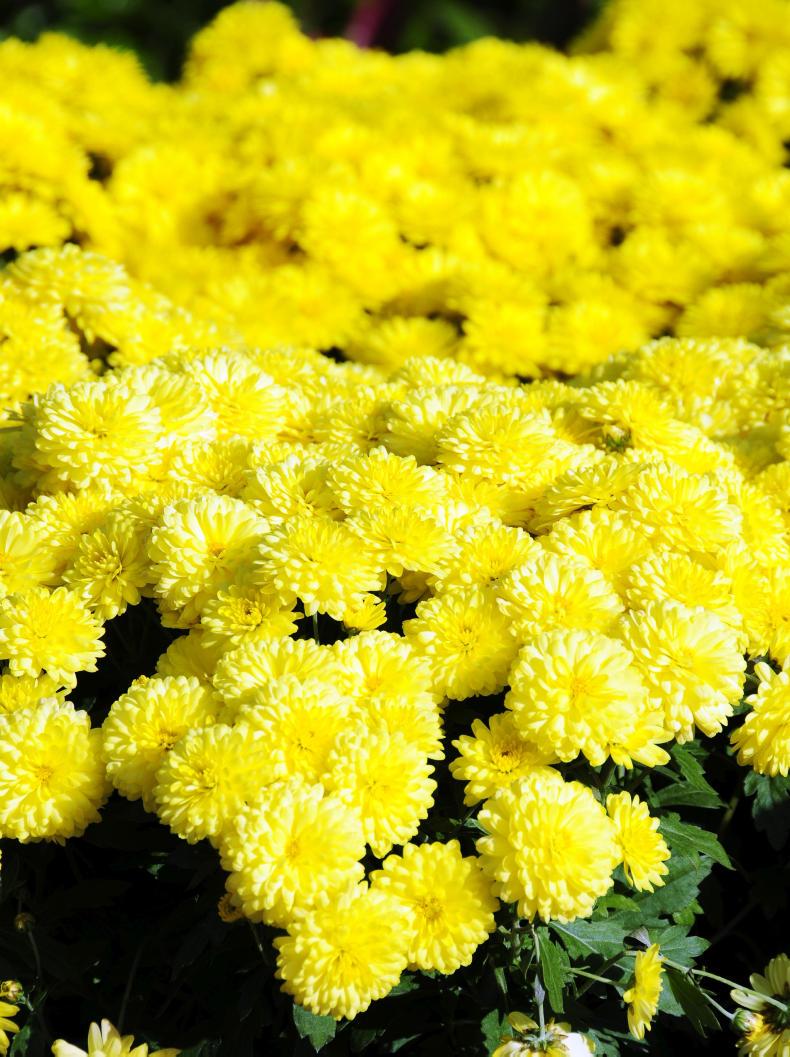Mountain ash, or rowan, and whitebeam are very closely related, both being members of the sorbus genus. However, they look quite different and could be taken for separate trees. The big difference between the two is that the mountain ash has its leaves divided into as many as 12 leaflets, while the whitebeam has undivided oval leaves. Mountain ash foliage looks like that of the common ash tree and the tree itself has something of the appearance of ash. The leaves of whitebeam are covered with white hairs on the undersides and they show up white in the breeze.
Although both species are native trees, mountain ash is much more widespread, growing on hills and rocky places, and is much better known. Most of the whitebeam trees that can be seen around the country have been planted, but wild native trees exist to a much lesser extent. In fact, there are several species of whitebeam native to Ireland and only the single mountain ash species, Sorbus aucuparia. The most common whitebeam species is Sorbus aria, found mostly in Co Galway on limestone.
There are five other species, including Sorbus anglica, found only in Co Kerry, and Sorbus hibernica, the only species unique to Ireland, which grows in the midlands on limestone. While there are several native species, they only survive in places that grazing animals cannot access to graze.
Whitebeam is often planted as a street tree and in parks, but it is a good garden tree too. Starting in spring, it shows a fine display of silvery new leaves. The hairs on the upper surface are fewer and are mostly shed later. Bud burst is soon followed by flowering with bunches of small white flowers, a pretty combination with the grey leaves. In late summer, the resulting berries turn red and are eventually eaten by birds. In autumn, the leaves turn to good shades of yellow and orange. With the leaves shed, the shape of the tree is good, upright and neat.
Whitebeam is a very hardy tree, capable of growing to about 10 metres, though often less, and very resistant to wind, even in coastal areas, due to the protective hairs on the leaves.
There are various forms and selections of whitebeam, the best-known and most widely grown of which is Sorbus aria ‘Lutescens’, which has an extra coating of white hairs on both sides of the leaves, making them very silvery in spring and grey-silver in summer. ‘Magnifica’ has no hairs on the upper side of the leaves, making them look glossy and they are larger than the ordinary kind. ‘Majestica’ also has large leaves to over 15cm.
A separate Chinese whitebeam, Sorbus folgneri, is very spectacular in its yellow autumn colour and white-backed, relatively narrow leaves (pictured). This tree will only colour well when grown in very well-drained soil.
All whitebeams need well-drained soil to grow well. But they do not need good soil and do very well in poor soil. Overly fertile soil with poor drainage can make the tree soft and prone to root and stem rots. While its relative mountain ash does best on acid soil, whitebeam favours dry limey soils and can grow in acid soils perfectly well. When planting whitebeam in a windy area, use small plants that adapt to the conditions. It is common for larger plants to lean away from the direction of the wind. If used, these larger trees should be well staked for the first few years until the anchor roots are well established. Whitebeam generally needs no pruning except to clean up the stem and to remove any badly placed branches. CL
Fill-in chrysanthemums
This is the natural flowering season of chrysanthemums, although they can be flowered commercially year-round by manipulating day length, light intensity and temperature levels. These flowers bring a touch of colour to the garden late in the year, usually in shades of yellow, red, pink, purple and white, brightening up borders that are looking very tired.
If you have no chrysanths, and the garden could do with a few spots of colour, the small potted chrysanthemums for sale now in garden centres are ideal. Put in a few here and there towards the front of a border and see an instant improvement. When they have finished flowering, find some space to plant them out. Quite often these plants are hardy and may survive for a few years, flowering again.
Fruit, vegetables and herbs
This is an ideal time to plant new fruit trees and bushes. Tidy up vegetable ground, removing old crops to the compost heap, unless they are diseased. Control weeds over areas of ground that will be dug later. Spread compost and rotted manure to give it time to be absorbed into the soil.
Trees, shrubs and roses
Planting of bare-root deciduous trees, hedging and shrubs can continue in good weather. Do not plant into saturated wet ground. All kinds of pot-grown trees and shrubs can also be planted. Check that young trees are securely staked – wind-rocking can seriously damage young trees.
Flowers
Spring bulbs should be in the ground by now but should be planted if not. Tulips and alliums can be planted quite late and still do very well. Bedding plants for spring colour should be put in now, if not already done. Lift or cover dahlias and gladiolus in frosty localities to prevent damage.
Lawn
If moss has been a problem, lawn moss-killer can be used now. Moss will grow strongly in the coming months and may have built up to damaging levels. Even though grass growth has slowed, occasional mowing is a good idea if the soil is not too wet.
Greenhouse and house plants
Remove all debris and dead plants and ventilate occasionally. To reduce the risk of grey mould disease, water very little. Set up a greenhouse frost-protection heater to protect tender plants, such as geraniums or fuchsias. Be careful not to over-water house plants from now on.






 This is a subscriber-only article
This is a subscriber-only article










SHARING OPTIONS: